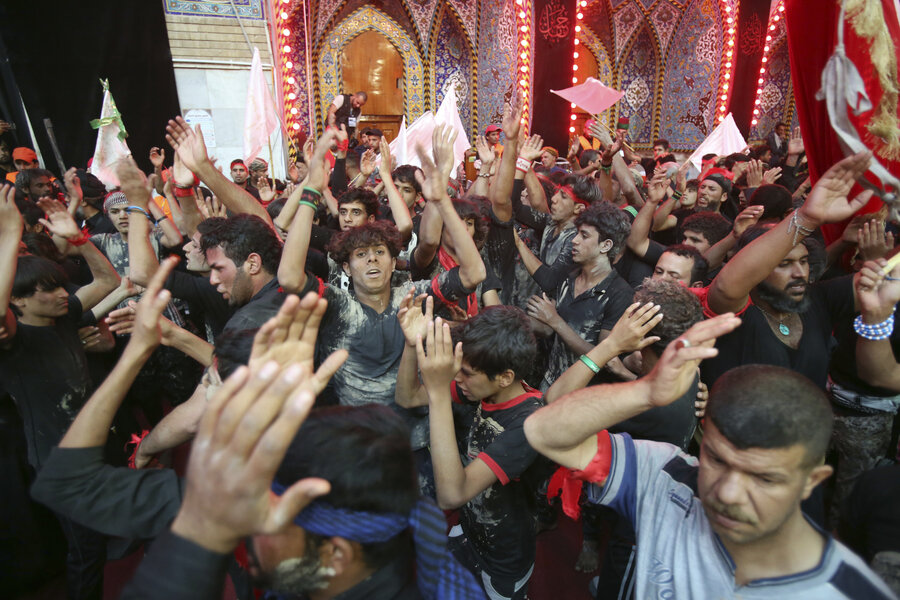Did the news media overlook the world's biggest religious gathering?
Loading...
Millions of Shiite Muslim worshippers converged on Iraq’s holy city of Karbala last week as part of the annual pilgrimage of Arbaeen, culminating a 40-day mourning period for the killing in AD 680 of Imam Hussein, grandson of the prophet Muhammed.
Pilgrims arrived on foot at the shrines of Imam Hussein and his half-brother Abbas on Nov 20-21, according to the Independent, crossing hundreds of miles in some cases, including territory that borders areas held by the self-proclaimed Islamic State – a Sunni group that routinely targets Shiite civilians, whom they consider heretics.
And as groups of worshippers, mostly from Iran and Afghanistan, returned home on buses, they were attacked by a truck bomb, killing 77 people and wounding dozens of others. It followed another IS attack, this one in Karbala itself, that killed six.
But the parade of worshippers who had proceeded to the holy city, undeterred by the threat of violence, testified to a quiet, non-military brand of defiance of IS. For many, it was just the kind of mass gesture of peaceful resistance that certain far-right corners of the West demand from Muslims worldwide. And in subsequent days, a growing number of voices on social media and elsewhere have questioned why the world’s largest religious procession didn’t receive more media coverage.
Others said the lack of coverage amounted to a media “blackout.”
As rumor-busting site Snopes points out, several mainstream news sources did run stories about it. But the relative scarcity of attention still might raise questions about whether news organizations are focused enough on facilitating public understanding of Islam and the Islamic world, at a time when anti-Muslim sentiment is ascending to the forefront of US and European politics.
An expression of Shiite pride as well as a religious ceremony, the Arbaeen is always politically significant, as Al-Monitor noted in 2014.
“The ritual is no longer a purely cultural ceremony but has become something of a political protest,” wrote the site. “It's a show of force against those hostile to the rise of the Shiites in the region.”
The ceremony is also no stranger to terrorism, with anti-Shiite groups targeting worshippers for perennial attacks. They come anyway: after the 2003 fall of Saddam Hussein’s regime, which suppressed the event, its ranks have swollen from 2 million attendees to as many as 20 million this year, making it better-attended than the hajj, the most significant of Islamic pilgrimages. And it’s often an occasion for solidarity with non-Arabs – with millions of devotees attending from Iran – and followers of other faiths, as The Christian Science Monitor’s Jane Arraf wrote in 2012:
Most of the pilgrims are in plastic sandals – some with only tape holding them together – during the three-day walk from Baghdad. Some push friends or relatives in wheelchairs and carry small children. A few wrap themselves in the white shrouds they want to be buried in if they die on the way.
Carrying nothing, they rely on the kindness of Shiites and some Sunnis who set up hospitality tents along the way providing food, medical treatment, and a place to rest – despite the risk posed by terrorist attacks.
Faithful tend to treat commemorations held abroad as an opportunity to call for unity, too. In London last year, local Shiites used the day to mount an anti-IS march following attacks by the group in Paris, Beirut, and other cities. Organizers complained afterward of near-silence from the press.
"This year we had hundreds of placards which were basically saying ‘no’ to terrorism and ‘no’ to Isis. A very direct message,” organizer Waqar Haider told the Britain's Independent then.
"For us it was a controversial move to go political. Normally we don’t mix politics with mourning. However with what's happened recently, we thought we had to make sure we as a community totally disassociate ourselves with what's happening elsewhere in the world,” he added.
"I think [the lack of media coverage] is because of stereotyping. People see the entire Muslim community as one community.”








